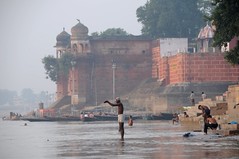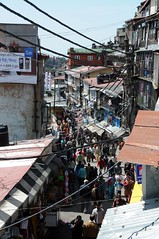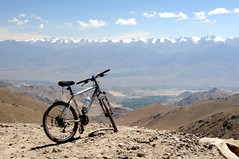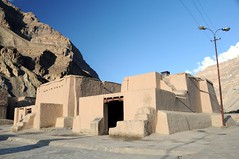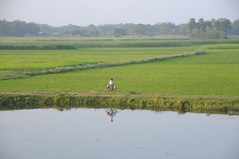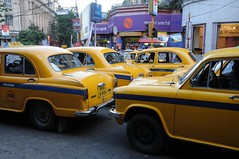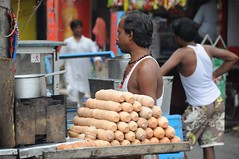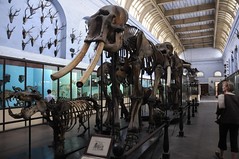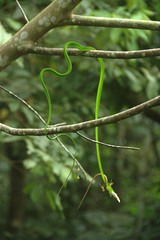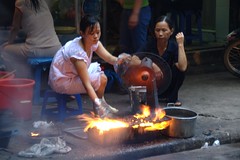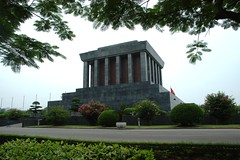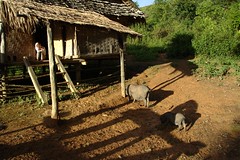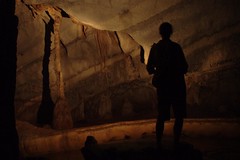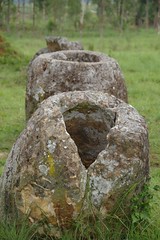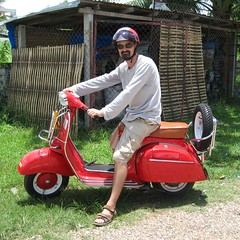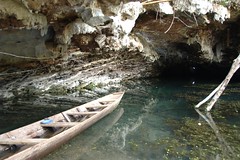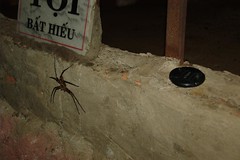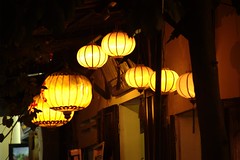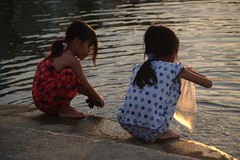Mysore was a standout town for us and India; it was actually fairly clean and livable. There were large boulevards to walk down and a brilliant market to explore, and then there was its fabulous palace, built only a hundred years ago, but quite impressive. After trying to sneak in with our camera (they were banned) we joined the hundreds of locals in marveling at its magnificent rooms.
Our time in Mysore also coincided with the start of the India's major festival period; Diwali, the festival of lights. We have since christened it the never-ending Diwali as it has followed us like that autorickshaw. The festival would be great if it was just the fireworks but as it turns out it also involves kids igniting fire crackers - the exploding, banging kind.
There doesn't seem to be any regulation on the size of bang either. Sitting and trying to have an evening meal while an explosion rocks you and the buildings around is not much fun – especially in a country that has active terrorism. But that is just a minor complaint and since Mysore the sights we have seen more than make up for the long travel or kids risking their fingers.
Firstly there was Hampi a boulder strewn region that once contained a capital city of an abandoned empire. The inhabitants were prodigious carvers and with the masses of material scattered around turned it all into an amazing rock city. Wandering around giant boulders to the forgotten temples and bazaars was one of the highlights for our trip in the south. Seeing as we almost did not have time to get there the experience was doubly magical.
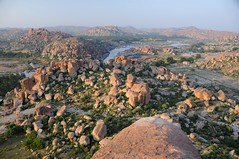
Boulder strewn Hampi
Hampi was a highlight, so was Mysore, and then there was Bombay, our next stop. We came all the way from the south, clocking up those kilometres, to the big financial smokey town to meet Rob's sister. She had come all the way from Oz to meet us (bless her, someone who actually wants to travel with us for a month). We were going further north to where we hadn't been yet (it still hard to believe how big and varied this country is) and she was happily coming along for the ride.
The colonial architecture of the graceful buildings and busy bustling thoroughfares of Mumbai was our first shared experience. Unfortunately for me it was tainted by the expense of the place and is now also viewed through a bed bug riddled prism. Due to the cost of getting a room we ended up crashing at the cheapest place we found, the Salvos. God bless them, they provide cheapish rooms but they also came with some ferocious bed-bugs. Those blood sucking mites, savaged me for a few nights in a row. Luckily for Mumbai we have to go back there so it will get a chance to redeem itself.
We kept heading north and to begin with the journey wasn't that crash hot for us. To start there was a rough overnight train trip to Ahmedabad in sleeper class, the most basic, where me and Rob had to share a single bunk (a long story but not something I would repeat in a hurry). Then after reading a good review of the city with its old town we discovered that prosperous Ahmedabad was also one full of traffic and virtually devoid of accessible sights. Instead of a few nights there we quickly departed after one.
Then finally after a hard week or so we made it to almost mythical Rajasthan and it was fantastic to end up in its southern jewel, Udaipur. The city is another gem by Indian standards and although it doesn't take too much looking to see some of the more undesirable elements of India in its nooks and crannies the beauty of the architecture there overwhelmingly outweighed any negatives.
Udaipur is graced by its setting around a man-made lake. Even though the water was mostly a shade of green it still was a fantastically photogenic place where sunsets are the stuff of photographers wet dreams especially when there are graceful soaring palaces to fill up the viewfinder. Then there are the palaces that take up every inch of islands in the lake. This is a place which would make a fabulous set for a movie and as we found out it has. Every night we were treated (and then eventually annoyed) by showings of James Bond's Octopussy at the roof-top restaurants around town.
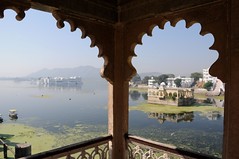
Udaipur's lake
We spent quite a lot of time wandering around the old town and its tourist orientated streets, visiting the city palace where like Mysore we filed through its small rooms and courtyards with hundreds of gawping locals and buses of foreign tour groups alike. Unlike Bond though we didn't get to a couple of locations in the film, one in particular, the lake palace, is now a very flash hotel. You can dine in the restaurant but we were held back by the fact we needed to iron our clothes first (and possibly the price).
Movie locations were one of the reasons that drove us on to the next city we visited, Jodhpur. The city starred in the film Darjeeling Limited, which had inspired us last year to get to India. Now after clambering around the city's imposing fort and getting the birds eye view of the labyrinth like old city with its Brahmin blue washed walls you could see why the old city was chosen as an extra to Owen Wilson and co. We spent a few nights there taking in the old city and superb central market with its amazing clocktower, but also trying to dodge that autorickshaw driver.
Jodhpur's fort and the old city were impressive and reason enough to get there but after now venturing further west to India's frontier desert town of Jaisalmer and immersing ourselves in its own version of ancient defences it is hard to work out which is more scenic. Jaisalmer though has foregone the blue paint and instead just devoted itself to natural sandstone so the effect of the fort's rounded bastions rising out of the old town and surrounding Thar desert is a bit like a sandcastle at one immense beach.
The old town of Jaisalmer has the added benefit though of some of the most exquisitely carved noblemen's houses or havellis you will likely see anywhere. They are rivaled only by the fort palaces for intricately carved stone lattice screens and flower features under eves that are attached with a bayonet fixture similar to a light bulb.
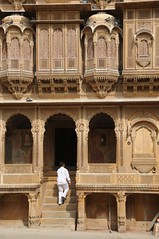
A Jaisalmer havelli
Jaisalmer is not just a big fairyland town in the desert it is also the home of camel safaris. A chance to escape the noise, smog, grime and yes creepy rickshaw drivers and jump instead onto farting camels and head into the peaceful, quite and very sandy desert to sleep under the stars for a few days. And that is what we have just done, but will have to wait until the next update. Coming sooner than the last I promise.
